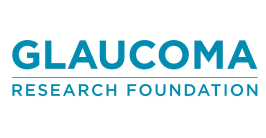We are on a mission to preserve vision and prevent blindness.
Patients with certain ophthalmic diseases can suffer progressive and permanent vision loss over time. Despite numerous approved therapies, glaucoma remains a leading cause of preventable blindness worldwide. We are committed to combining our expertise in drug development with an undaunted creative approach to develop therapies that others may have overlooked in order to make an unprecedented change for patients with glaucoma and other treatable ophthalmic disorders.
Focus Areas
Unmet needs in ophthalmology
Glaucoma
For glaucoma, a number of key unmet needs remain. These include:
New mechanisms of action allowing for the treatment of unique aspects of glaucoma that are unable to be addressed with currently available therapies
Therapies with a sustained duration of action to reduce the burden of eyedrops and control intraocular pressure (IOP) fluctuation throughout the day
Novel neuroprotective therapies that work independently from intraocular pressure-lowering medications to protect the optic nerve and preserve vision
QLS-111
Our lead program, QLS-111, targets the first of these key unmet needs. With its unique vasodilatory mechanism of action, it is designed to lower IOP by reducing episcleral venous pressure (EVP). Thanks to this first-in-class mechanism of action, we can now tackle obstacles that were previously considered insurmountable, and we will continue to follow the science to additional indications where there is patient need. Below we include three separate indications where QLS-111 may be impactful and bring new value to patients for the management of IOP-related disorders.
Normal Tension Glaucoma (NTG)
Treatment guidelines for patients suffering from Normal Tension Glaucoma (NTG) suggest lowering IOP as far as pharmacologically possible. However, EVP may limit the extent to which IOP may be lowered and itself may be an even larger contributor to total IOP than in other diseases. By lowering EVP, QLS-111 could present a wholly new paradigm in the treatment of NTG, which can affect up to 40% of glaucoma patients in the US and strikingly, up to 90% of glaucoma patients in East Asia.
Primary Open-Angle Glaucoma (POAG) and Ocular Hypertension (OHT)
Despite the many therapies that exist for the treatment of POAG and OHT, none directly target and mitigate the contribution of EVP, the largest single component of total IOP. By lowering EVP in POAG patients, QLS-111 could provide a completely new treatment option that works as either a standalone monotherapy product for POAG, or one that directly complements therapies with other mechanisms of action due to QLS-111’s distinct and novel focus on EVP.
Sturge-Weber Syndrome (SWS)
Sturge-Weber syndrome is a pediatric rare disease signified by a facial port wine birthmark. Patients with SWS can often suffer from severe, intractable glaucoma in the eye on the same side as their birthmark. Currently, therapies are only modestly effective since SWS-related IOP elevation is caused by elevated EVP, for which current therapies are limited. By directly lowering EVP, QLS-111 may be uniquely well-suited to addressing this disease and improving the lives of SWS sufferers.
Add Your Heading Text Here
Collaborations

